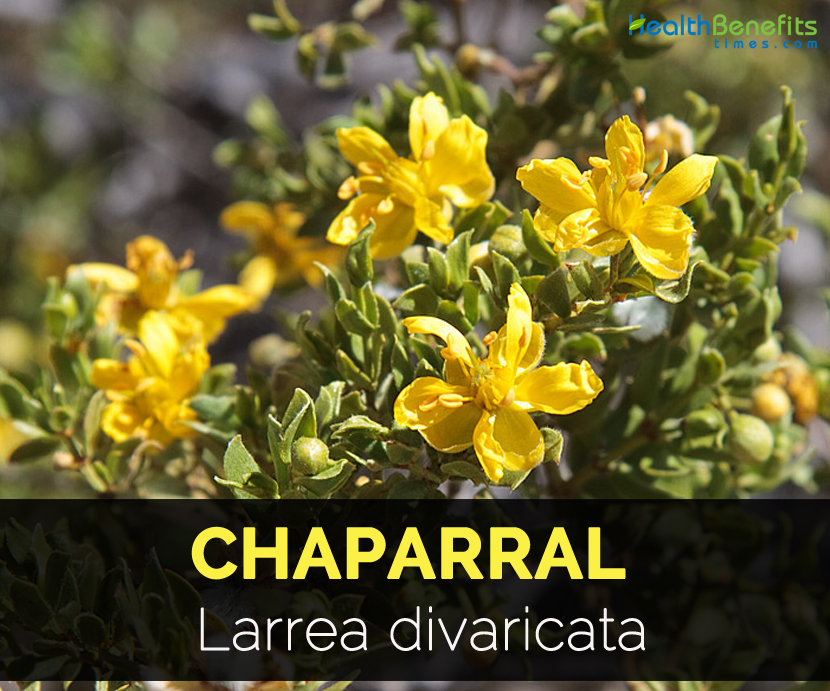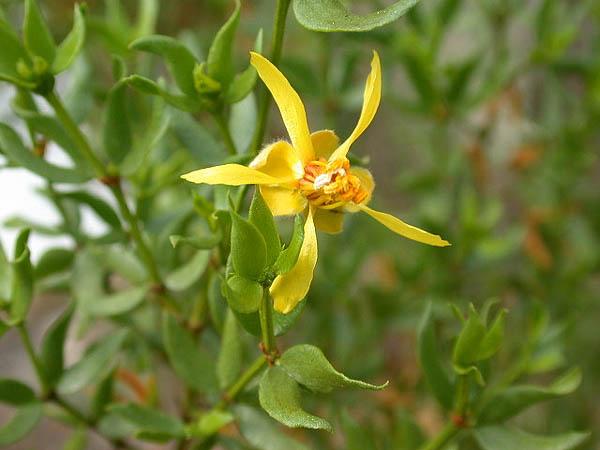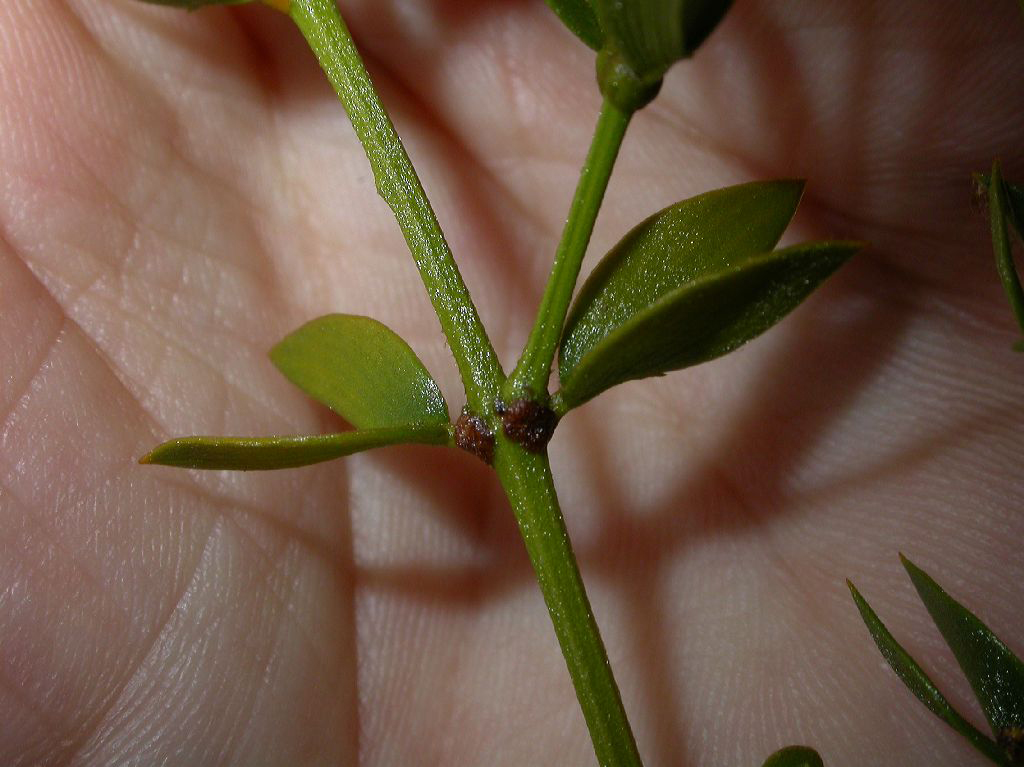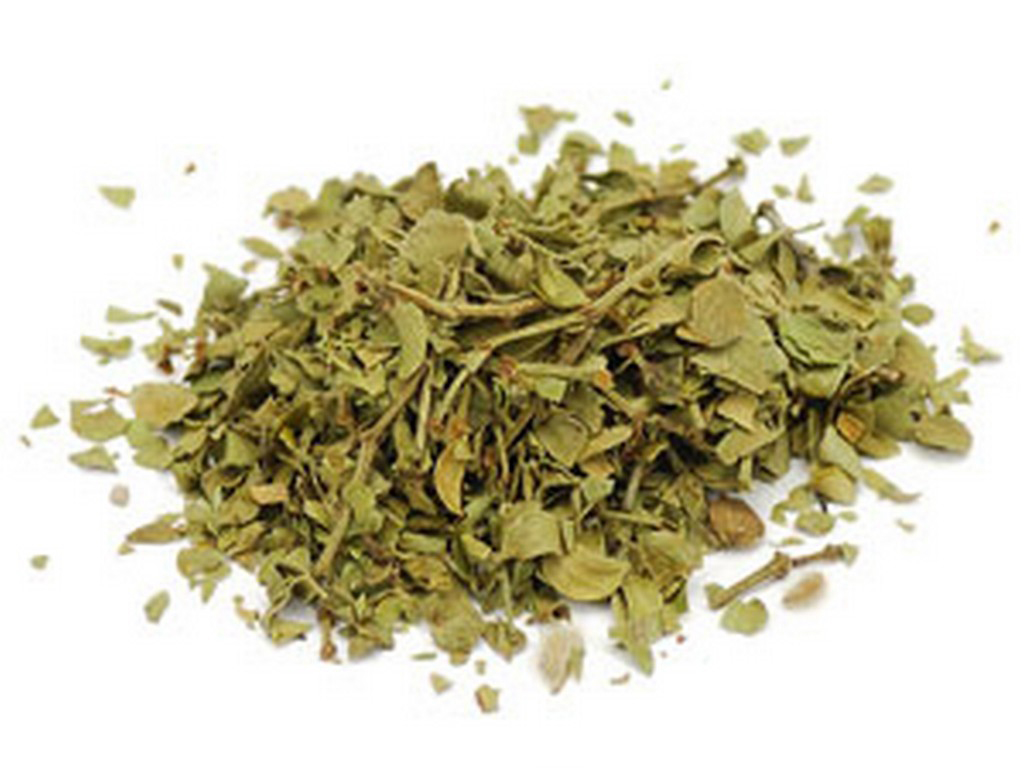| Chaparral Quick Facts | |
|---|---|
| Name: | Chaparral |
| Scientific Name: | Larrea divaricata |
| Origin | Southwestern South America |
| Name | Chaparral |
|---|---|
| Scientific Name | Larrea divaricata |
| Native | Southwestern South America |
| Common/English Name | Chaparral, Chaparro, Greasewood, Creosote Bush, Gobonadora, Dwarf Evergreen Oak, Creosote Bush, Greasewood, Créosotier, Hediondilla, Jarilla, Larrea tridentata, Larrea divaricata, Larreastat, Larrea mexicana, Zygophyllum tridentatum |
| Name in Other Languages | Spanish: Jarilla |
| Stem | Cylindrical |
| Leaf | Small, dark green, elliptical |
| Medicinal parts | The leaves and stems |
| Flower | Yellow, 1/2 inch across |
Description
It is a slow growing shrub which grows to the height of 3 meters (10 ft). Stems are cylindrical. Leaves are small, dark green and elliptical, resinous and grow in opposite pairs. Flowers are yellow and five petals which appear in October and November. Fruits are dry capsules which contains hairs and five seeds.
Dose
Externally: Boiled leaves and branches for bruises as well as rheumatism. In some areas was added to the boiled herb for the above. Apply dry heated leaves and branches as a poultice for chest and other body pain.
Veterinary: After the resins have been obtained for commercial use as a preservative, the leaf residue is fed to livestock. It contains as much protein as Alfalfa.
Traditional uses
- Tea made from Chaparral tea is used for treating bronchitis and common cold.
- It is used for alleviating stomach pain, rheumatic pain, snake bite pain and chicken pox.
- American Indians use it for bowel cramps, arthritis, chronic skin disorders, colds and gas.
- Use it internally for stomach problems, premenstrual syndrome, kidney and gall bladder stones, diabetes, upper respiratory tract infections and urinary tract infections.
- Use it as a deodorant for feet and armpits.
- In United States and Mexico, it is used for treating digestive and gastrointestinal problems.
- Leaves decoction and infusions are used for treating upset stomach and diarrhea.
- Pima tribe applied it to gum orally or chewed and swallowed for treating gastrointestinal complaints.
- Native American tribes use the leaves or twigs infusion for relieving stiffness and pain in limbs and joints.
- Apply the poultice made from heated leaves to alleviate pain from rheumatic diseases.
- Native American uses it for treating pulmonary, respiratory and throat problems.
- Apply it externally for lacerations, bruises, bites, dandruff and stings.
- Tea prepared from leaves is used for treating throat conditions.
Culinary uses
- It is used in form of tea.
- Once it was used as a preservative for oil and food.
Side effects
- It may result side effects such as stomach pain, weight loss, nausea, fever, kidney damage and diarrhea.
- It may cause rashes and itching.
References:
https://www.itis.gov/servlet/SingleRpt/SingleRpt?search_topic=TSN&search_value=29051#null
https://pfaf.org/user/Plant.aspx?LatinName=Larrea+tridentata
https://en.wikipedia.org/wiki/Larrea_divaricata
https://wildrosecollege.com/encyclopaedia_entry/chaparral-larrea-divaricata/
https://alvinepharma.com/chaparral-and-its-benefits-side-effects-dosage-and-interactions/
http://www.softschools.com/facts/biomes/chaparral_biome_facts/169/





